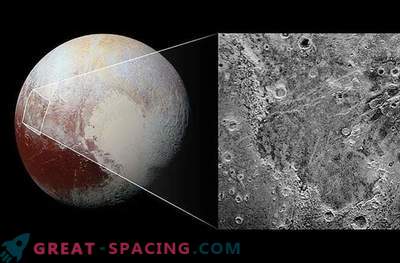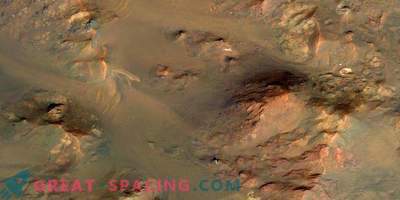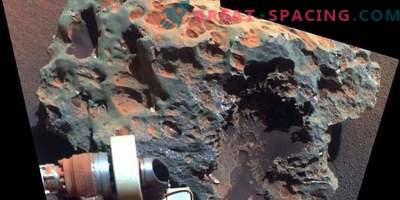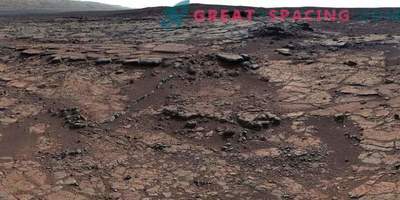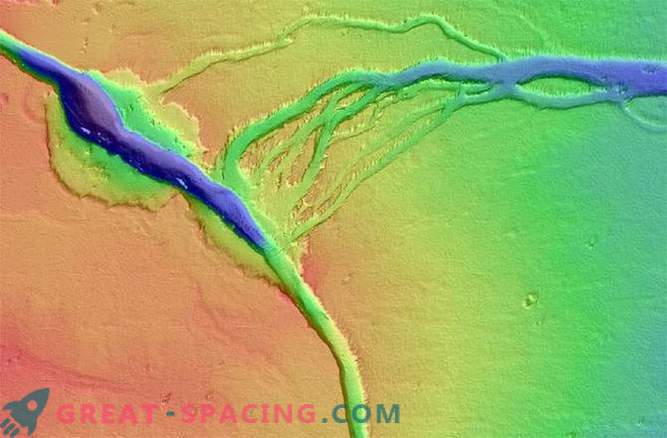
It is very difficult to try to understand the climate of our planet of ancient times, but in order to comprehend the climate history of Mars, astronomers were forced to turn to a rather inventive method of climate expertise.
If you did not understand the title, then Mars used to have much more water than it does now; water flowed over its surface and wide lakes, or even seas, covered huge tracts of land. When the solar wind destroyed the atmosphere of the red planet, the air pressure on the planet dropped, and Mars began to dry out. Liquid water turned into bark and sublimated while any atmospheric moisture was carried away into space.
However, the biggest mystery for scientists is not why Mars is so dry now, but how it can hold liquid water on its surface in general.

On August 1, 2007, we managed to get this image of Russell crater dunes. It differs in that it is seasonally covered with carbon dioxide. Here you can see the field after evaporation of frost and the transformation of ice into gas. Dark traces of dust devils are visible on winding paths.
In a new study published in the journal Nature Geoscience, Edwin Kite, a planetary geologist at the California Institute of Technology, took up the problem by first developing new tools to measure the thickness of the atmosphere of Mars in the past.
Measuring meteorite craters on the surface of Mars, Kite was able to assess how thick the atmosphere of Mars was in past times. The team of scientists focused on the measurement of 319 craters in the area of the Eolid ranges that are 3, 6 billion years old. When a meteorite invades the atmosphere of the planet, the thicker the atmosphere, the more resistance it has. Thus, the impact energy from an incident meteorite must correspond to the thickness of the atmosphere and atmospheric pressure.
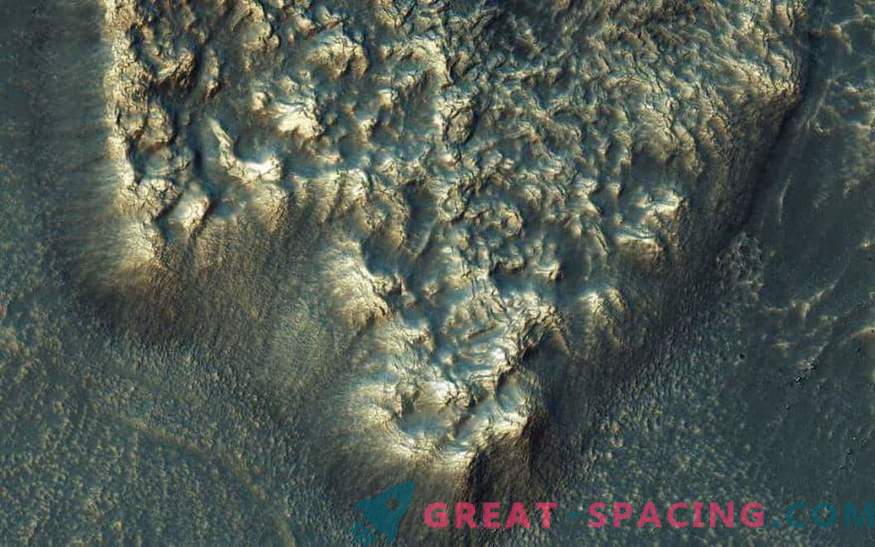
The MRO observes various Martian slopes, noting ice streams and glaciers. Here is a plot on the southern slope of the crater. It seems unusual because the streams are endowed with bright highlights. It is believed that the change of color and brightness level is associated with surface layers of dust and sand. While there is no evidence of activity streams, but it could be millions of years ago. Perhaps there and now there is ice.
Scientists have discovered that when meteor craters formed, the atmosphere of Mars should have a pressure of 0, 9 bar - this is 150 times higher than the actual atmospheric pressure and is approximately equal to the current pressure of the Earth at 1 bar at sea level. With such high pressure on Mars, it may indeed turn out that for a long time there was a lot of liquid water on the surface of the planet.
But a problem arises, Mars is 50 percent farther from the sun than the Earth, so the amount of solar energy is insufficient to hold water in a liquid state. To add mystery to the past of liquid water on Mars, it is worth mentioning that the young Sun radiated even less energy at that time.
As a consequence, based on Kite's statements, Mars would have to have much more pressure to ensure the existence of water in a liquid state on the surface - about 5 bar, or 5 times higher than the pressure in the Earth’s atmosphere at sea level.
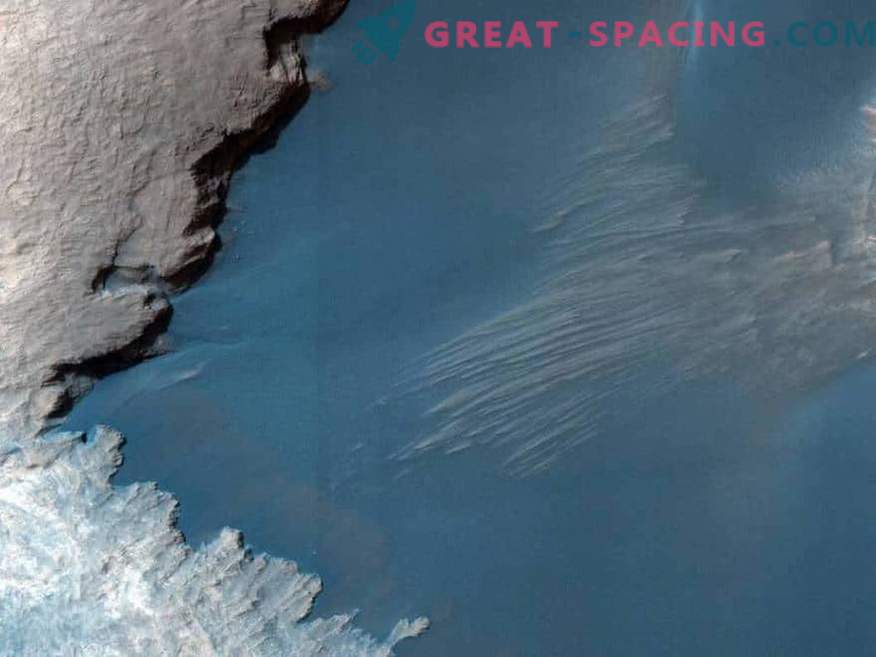
On October 24, 2007, it was possible to fix a part of the bottom of the Rabie crater - the largest footprint from a drummer in the southern Martian highlands. Dark dunes are covered with sand, enter the part of the crater bottom and create a contrast with the bright surface around. The close-up shows the texture with imprints of smaller ridges and grooves. Small ripples are created through wind currents in a thin atmospheric layer. But why is there a difference in color? Perhaps the fact is that the source of dark sand is something non-local to the crater. There is an option that topographic depression acted on the principle of a sand trap. “If Mars did not have a stable atmosphere with high pressure, while rivers flowed on the planet — as our results suggest — then a warm and moist greenhouse effect is excluded, and long-term average temperatures were most likely below zero,” Kite in his study.
If Mars was so cold and atmospheric pressure was so high as to keep water in a liquid state, then how could Mars provide a liquid state of water on its entire surface?
In a separate article published in the same journal, Senjoy Som from the Ames Research Center at NASA outlined several possible mechanisms that could allow Mars to maintain its water resources in a liquid state.
It is possible that the water on Mars is fairly salty, which lowers the freezing mark and allows it to be in a liquid state at low temperatures. This theory is spread as a possible explanation for water basins that may accumulate near the surface of Mars. Martian regolith is rich in perchlorates - these are highly toxic salts that can contribute to the formation of saline pockets with liquid water.
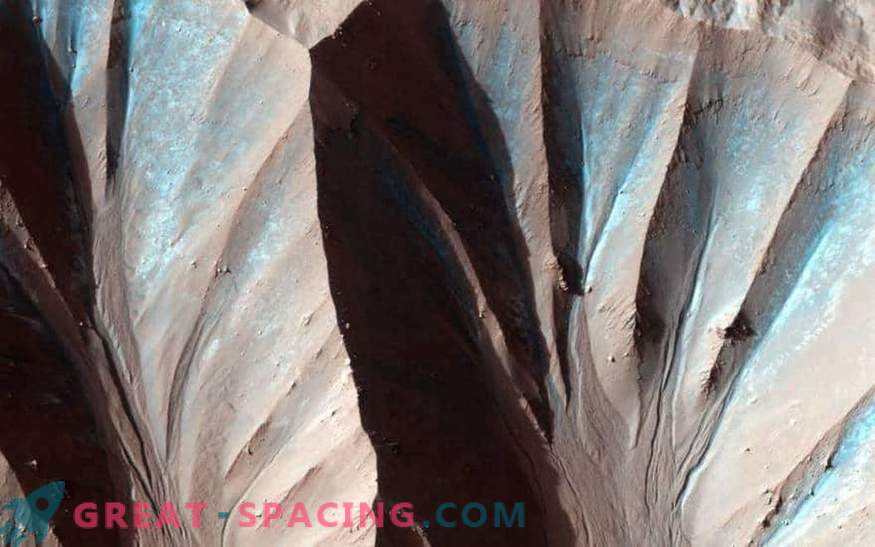
The picture was taken on the HiRISE camera of the MRO apparatus, performing the passage in the Martian orbit. Similar gully reliefs appear on a multitude of craters in mid-planetary latitudes. For the first time changes began to be noticed in 2006. Now they find a lot of deposits in the ravines. This photograph reflected the new sediment in the Gus crater living in the southern middle latitudes. The position differs in brightness in pictures in the improved color. The image was mined in the spring, but the stream formed in the winter. It is believed that the activity of the ravines awakens in winter and early spring. In addition, periods of intense volcanic activity may have released a huge amount of greenhouse gases, which contributed to the appearance of surface waters in a liquid state.
Som also points to “transitional intervals,” during which cyclical changes in the slope of Mars created atmospheric conditions favorable for a thicker atmosphere. Every 120,000 years, the tilt of the Red Planet is subject to precession, which affects the amount of sunlight that reaches the poles. This cycle could cause episodic freezing and thawing of surface waters on Mars.
Although this is a puzzle, the facts lie on the surface of the rovers and orbiters that are exploring the planet from a height of hundreds of miles: earlier Mars had more water in a liquid state than it is now. But how could a small world hold water in such a state for a long time? This is yet to be learned by scientists.




